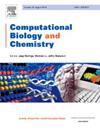基于核磁共振成像和语音信号的多模态抑郁检测的联合学习和深度学习框架
IF 2.6
4区 生物学
Q2 BIOLOGY
引用次数: 0
摘要
青春期是发展技能和知识、学习如何处理人际关系和情绪、培养成熟特质的重要时期。最近,抑郁症成为青少年常见的心理健康问题,影响了他们的日常生活。这将导致教育和社交障碍,并成为自杀的主要风险。因此,识别和治疗这种疾病至关重要。通过将深度学习(DL)算法应用于医疗数据,可以预测一个人的精神状况。然而,传统的深度学习模型在处理海量数据时面临挑战。因此,FL 成为了解决 DL 数据大小问题的有效解决方案。在这里,青少年的抑郁检测是通过考虑 FL 框架来进行的,该框架由两个模块组成,即本地模块和全局模块。本地模块使用基于 Exponential African Pelican Optimization 的深度卷积神经网络(ExpAPO-DCNN)进行检测,而全局模块则生成本地模块的汇总输出。在这项研究中,FL 利用 DL 模型生成输出,其中 DL 模型考虑了两种输入模式,如语音信号和磁共振成像(MRI)图像。本研究采用的处理步骤包括预处理、特征提取和检测。对于核磁共振成像和语音信号,上述所有过程都是单独进行的。最后,利用重叠系数对两个输出进行融合。ExpAPO-DCNN 获得的准确率、损失、均方根误差 (RMSE)、均方根误差 (MSE)、真阴性率 (TNR) 和真阳性率 (TPR) 分别为 98.00 %、0.023、0.058、0.240、97.90 % 和 96.30 %。本文章由计算机程序翻译,如有差异,请以英文原文为准。
Federated learning and deep learning framework for MRI image and speech signal-based multi-modal depression detection
Adolescence is a significant period for developing skills and knowledge and learning about managing relationships and emotions by gathering attributes for maturity. Recently, Depression arises as a common mental health issue in adolescents and this affects the daily life of the person. This leads to educational and social impairments and this acts as a major risk for suicide. As a result, the identification and treatment for this disorder are essential. By applying Deep learning (DL) algorithms to medical data, the mental condition of a person can be predicted. However, the traditional deep learning models face the challenge in processing the huge sized data. Hence, FL has emerged as an efficient solution for addressing the data size issue of DL. Here, Depression detection in adolescents is carried out by considering the FL framework, which comprises two modules, namely the local module and the Global module. The detection process is done in the local module using the proposed Exponential African Pelican Optimization based Deep Convolutional Neural Network (ExpAPO-DCNN), whereas the Global module produces the aggregated output of the local module. In this research, FL utilizes the DL model in producing the output, where the DL model considered two modalities of inputs, such as speech signal and Magnetic Resonance Imaging (MRI) image. The processing steps used for this research are pre-processing, feature extraction and detection. For MRI and speech signals, all the above processes are carried out individually. Finally, both the outputs are fused utilizing the overlap coefficient. The ExpAPO-DCNN obtained accuracy, Loss, Root mean Squared error (RMSE), Mean Squared error (MSE), True Negative rate (TNR), and True Positive rate (TPR) of 98.00 %, 0.023, 0.058, 0.240, 97.90 %, and 96.30 %, respectively.
求助全文
通过发布文献求助,成功后即可免费获取论文全文。
去求助
来源期刊

Computational Biology and Chemistry
生物-计算机:跨学科应用
CiteScore
6.10
自引率
3.20%
发文量
142
审稿时长
24 days
期刊介绍:
Computational Biology and Chemistry publishes original research papers and review articles in all areas of computational life sciences. High quality research contributions with a major computational component in the areas of nucleic acid and protein sequence research, molecular evolution, molecular genetics (functional genomics and proteomics), theory and practice of either biology-specific or chemical-biology-specific modeling, and structural biology of nucleic acids and proteins are particularly welcome. Exceptionally high quality research work in bioinformatics, systems biology, ecology, computational pharmacology, metabolism, biomedical engineering, epidemiology, and statistical genetics will also be considered.
Given their inherent uncertainty, protein modeling and molecular docking studies should be thoroughly validated. In the absence of experimental results for validation, the use of molecular dynamics simulations along with detailed free energy calculations, for example, should be used as complementary techniques to support the major conclusions. Submissions of premature modeling exercises without additional biological insights will not be considered.
Review articles will generally be commissioned by the editors and should not be submitted to the journal without explicit invitation. However prospective authors are welcome to send a brief (one to three pages) synopsis, which will be evaluated by the editors.
 求助内容:
求助内容: 应助结果提醒方式:
应助结果提醒方式:


